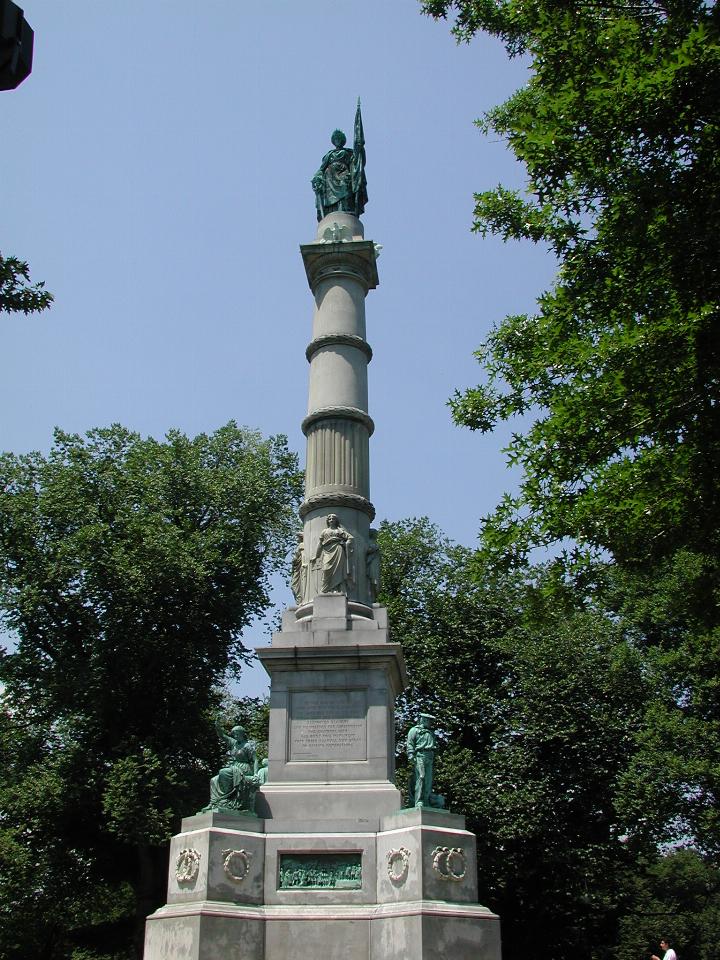

The Civil War monument, near the centre of Boston Commons, and located at its highest point. The inscription reads To the men of Boston who died for their country on land and sea in the war which kept the Union whole, destroyed slavery and maintained the Constitution, the grateful city has built this monument that their example may speak to coming generations. Martin Milmore was the sculptor.
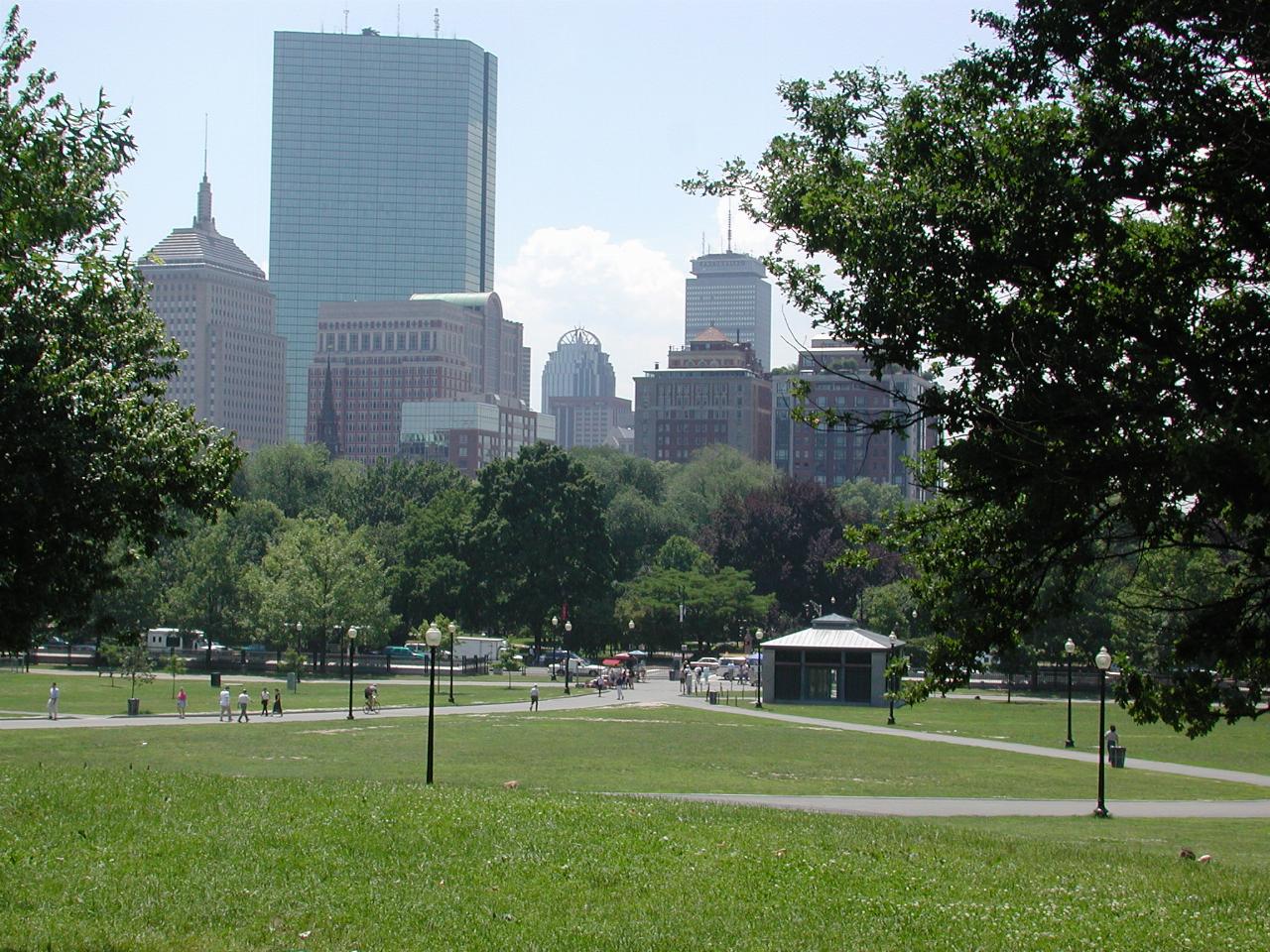
Looking from the monument across the Public Garden (the area with all the trees!) to the city skyline, including the Prudential Tower - located about mid picture, just near the tree.
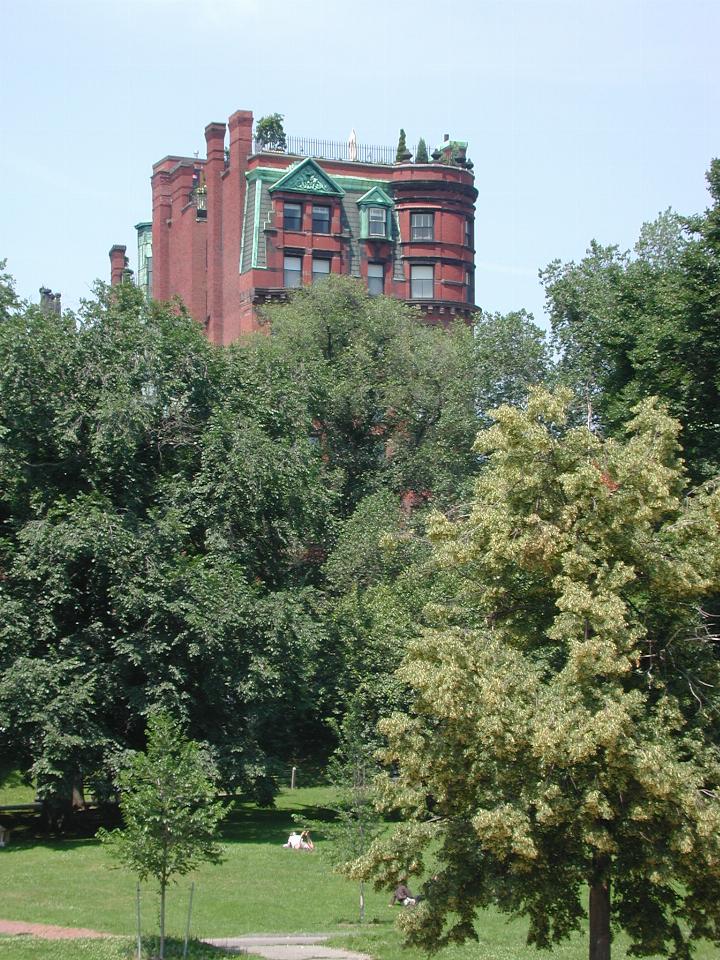
A roof garden! An apartment house with a wonderful view over Boston Commons.
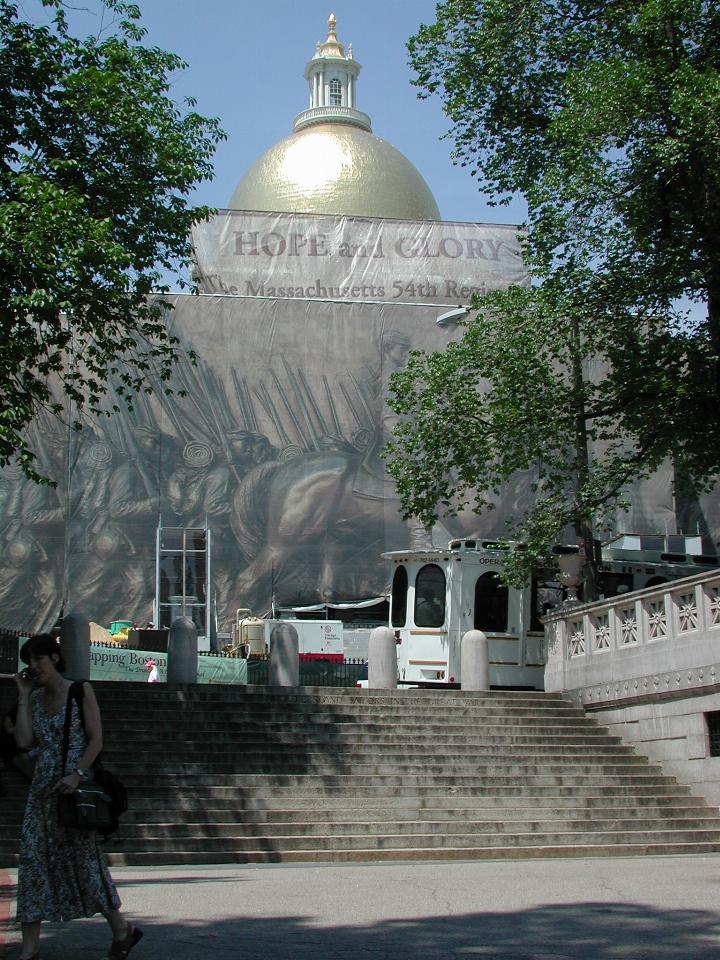
The State House (what Australian's would call Parliament House), currently wrapped up while undergoing renovations.
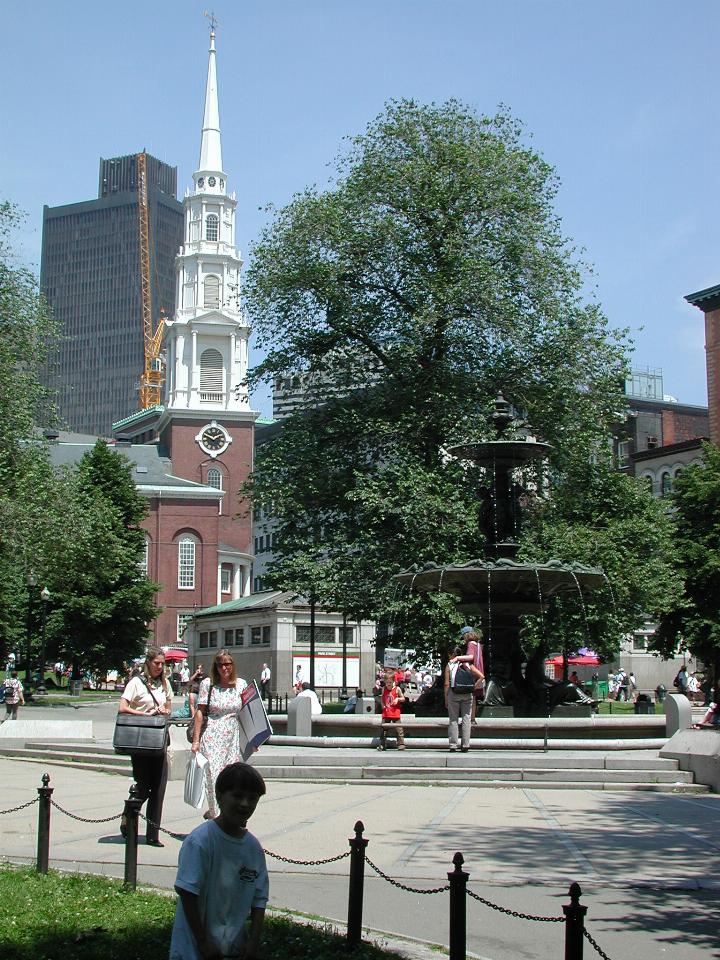
The Park Street Church, located on the eastern end of Boston Commons, and marking the end of the downtown area.
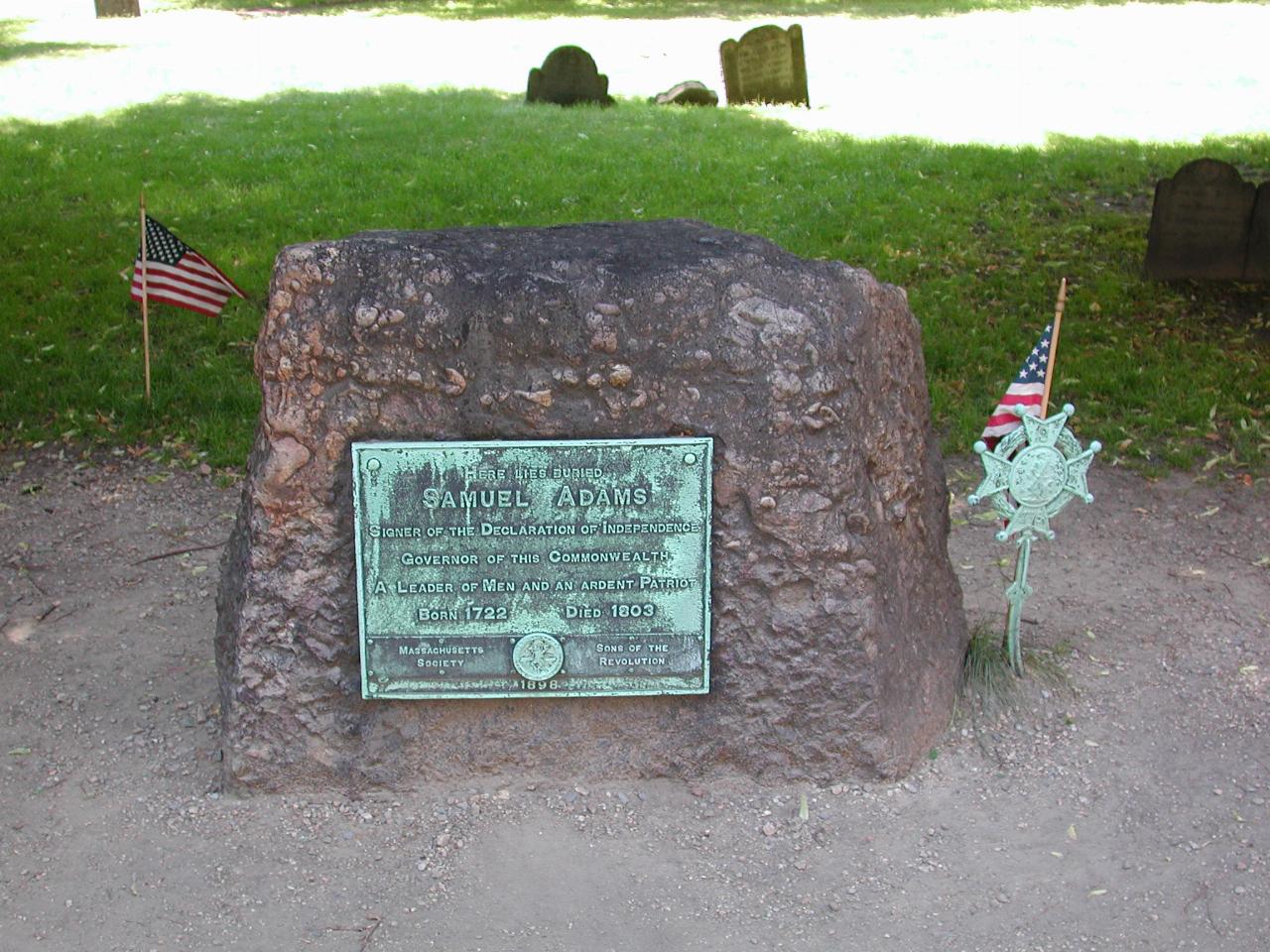
Samuel Adams was one of the signers of the Declaration of Independence, and described as "The Grand Incendiary", a powerful advocate of independence. The other two signers buried here were Robert Treat Paine and John Hancock.
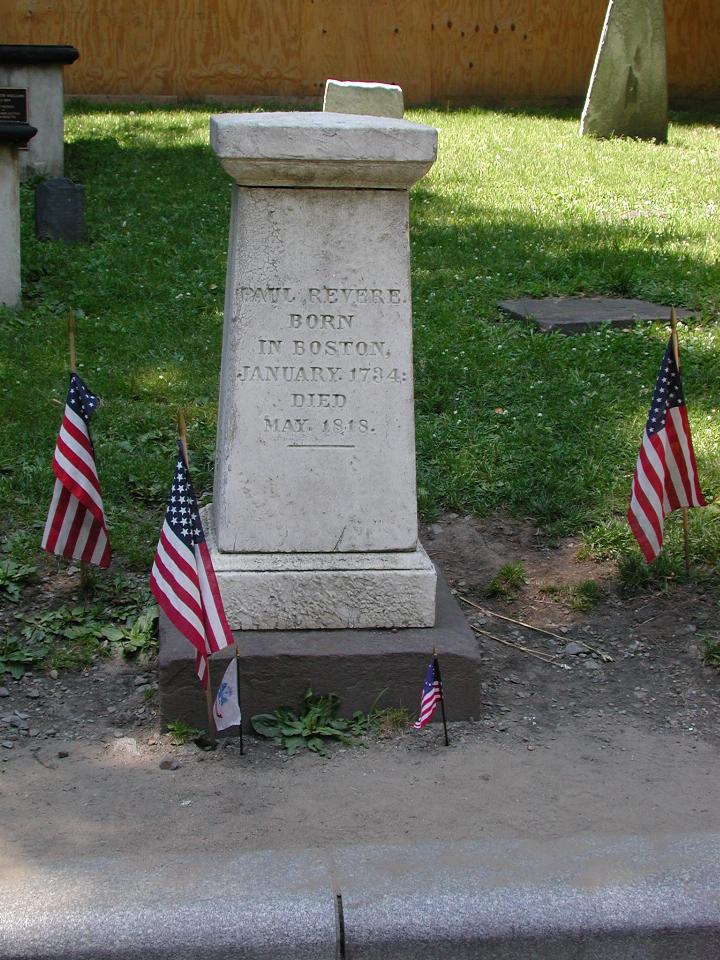
Paul Revere's headstone. He was a silversmith and engraver, and became famous for riding to Lexington to warn Hancock and Adams "the British are coming".